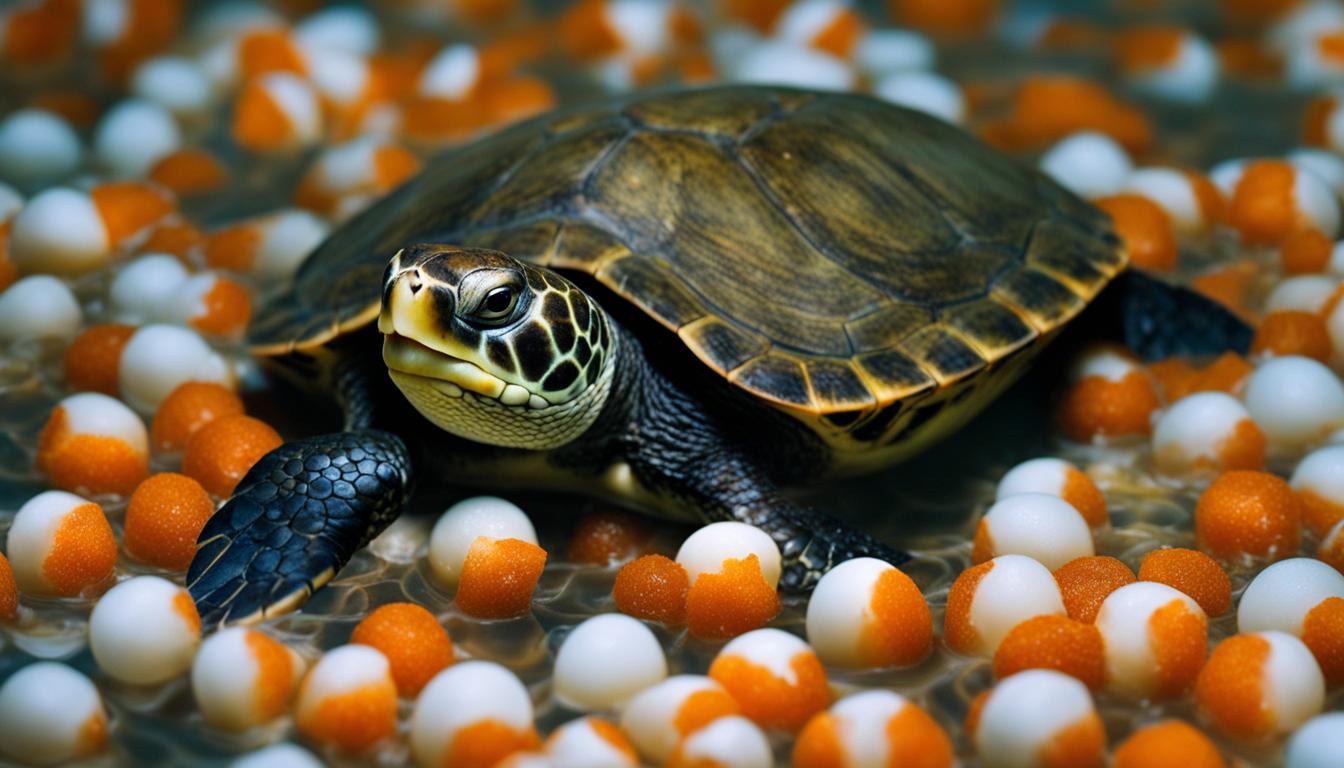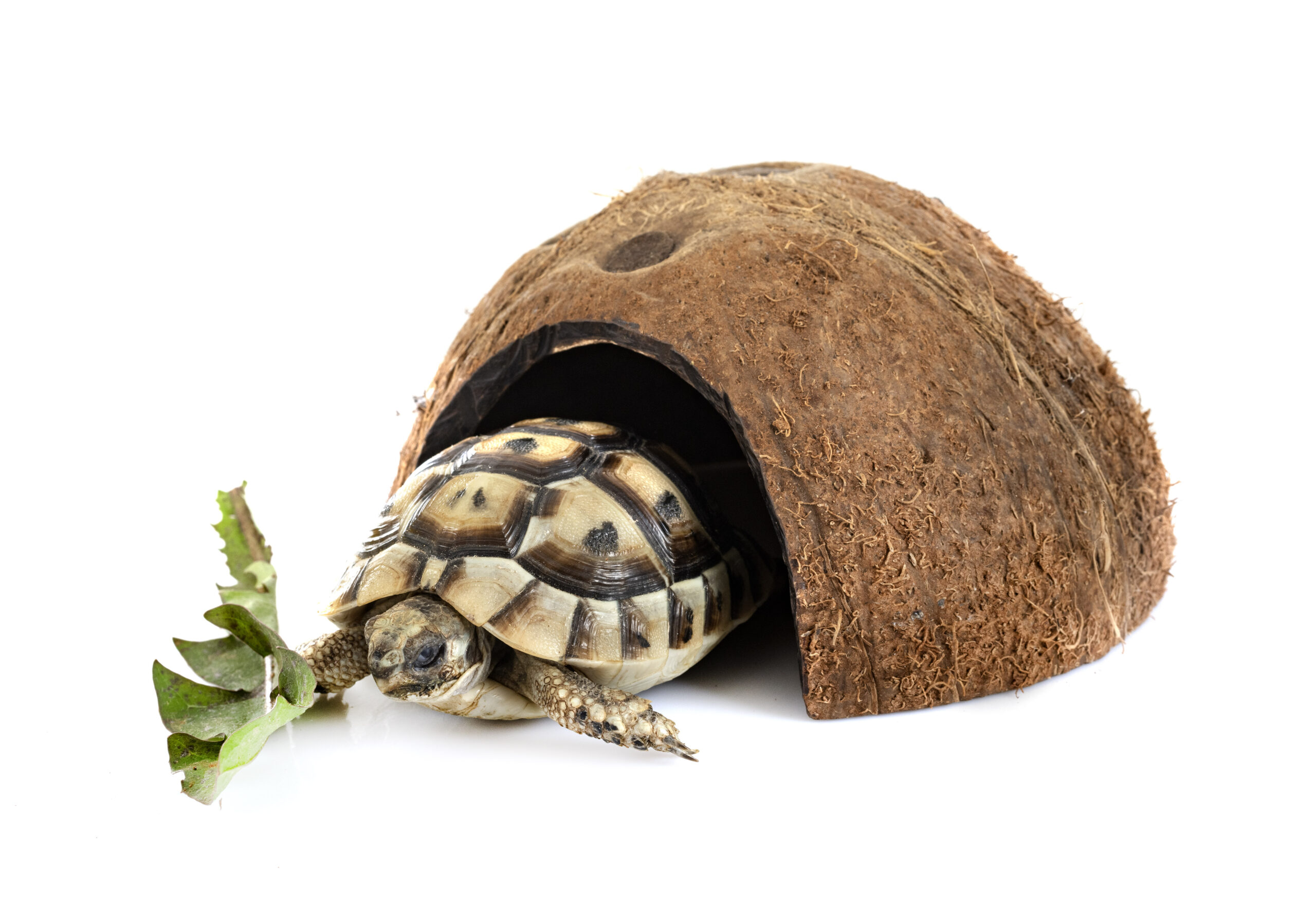Have you ever wondered do turtles eat fish eggs? Well, you’re not alone! Turtles are fascinating creatures with diverse diets, and some species are known to have a particular affinity for fish eggs. In this article, we will delve into the world of turtle diets and explore the relationship between turtles and fish eggs.
Some species of turtles, including aquatic, snapping, freshwater, and painted turtles, are known to consume fish eggs. Turtles are opportunistic eaters and will often consume nearby food sources, including fish eggs. They have a keen sense of smell and can locate fish nests with ease.
While not all turtles have a preference for fish eggs, some individuals are especially fond of them. Eating fish eggs can provide turtles with a good nutritional source, but it can also have negative consequences for fish populations and cause ecological imbalances. It’s important to protect fish eggs from turtles to maintain the balance of the ecosystem.
So, let’s dive deeper into the fascinating world of turtle diets and explore their eating habits, preferences, and the impact they have on fish eggs.
Key Takeaways:
- Turtles, including aquatic, snapping, freshwater, and painted turtles, are known to eat fish eggs.
- Turtles are opportunistic eaters and will consume nearby food sources, including fish eggs.
- Eating fish eggs can provide turtles with a good nutritional source, but it can be harmful to fish populations and cause ecological imbalances.
- Physical barriers can be used to protect fish eggs from turtles, and separating turtle and fish habitats can help maintain a harmonious coexistence.
- Female turtles generally do not eat their own eggs, but they may consume dead eggs for protein.
Types of Turtles that Eat Fish Eggs
Among the various types of turtles, there are several species that have a penchant for fish eggs. These turtles include aquatic turtles, snapping turtles, freshwater turtles, and painted turtles. While not all individuals within these species may consume fish eggs, it is a known behavior among certain individuals.
Aquatic turtles, as their name suggests, are primarily found in water habitats such as ponds, lakes, and rivers. They have adapted to this environment and have developed a taste for fish eggs along with other aquatic prey. Snapping turtles, known for their aggressive nature, are also known to include fish eggs in their diet. Freshwater turtles, which inhabit freshwater bodies such as rivers and streams, and painted turtles, commonly found in lakes and ponds, have likewise been observed consuming fish eggs.
It is important to note that individual preferences and behavior can vary even within the same species. While some turtles may actively seek out and consume fish eggs, others may not show the same inclination. The exact reasons behind these preferences and variations are still the subject of scientific study.
Turtles and Fish Egg Consumption in the Ocean
When it comes to sea turtles, fish eggs are not a regular part of their diet. However, these ocean-dwelling creatures have been known to opportunistically consume fish eggs when they come across them. Sea turtles, such as loggerhead turtles and green sea turtles, may indulge in fish eggs as a supplementary food source alongside their primary diet of algae, seagrasses, crabs, seaweed, jellyfish, and shrimp.
Sea turtles have a unique feeding behavior where they use their powerful jaws to bite and tear at their food. While fish egg consumption is not a primary focus for sea turtles, the occasional consumption of fish eggs can provide them with additional nutrients, including protein, fats, selenium, fatty acids, vitamin B12, and vitamin D.
| Turtle Species | Diet |
|---|---|
| Loggerhead Turtles | Algae, seagrasses, crabs, seaweed, jellyfish, shrimp, and occasional fish eggs |
| Green Sea Turtles | Algae, seagrasses, crabs, seaweed, jellyfish, shrimp, and occasional fish eggs |
“Sea turtles are fascinating creatures with diverse feeding habits. While fish egg consumption is not a regular part of their diet, it is interesting to note that they may opportunistically indulge in fish eggs when they encounter them in their oceanic habitats.”
It is important to remember that sea turtles play a vital role in maintaining the balance of marine ecosystems. Their feeding habits, including the occasional consumption of fish eggs, contribute to the natural dynamics of the ocean food chain. By exploring and understanding the diet and behavior of sea turtles, we can gain valuable insights into the complex interactions that occur within marine environments.
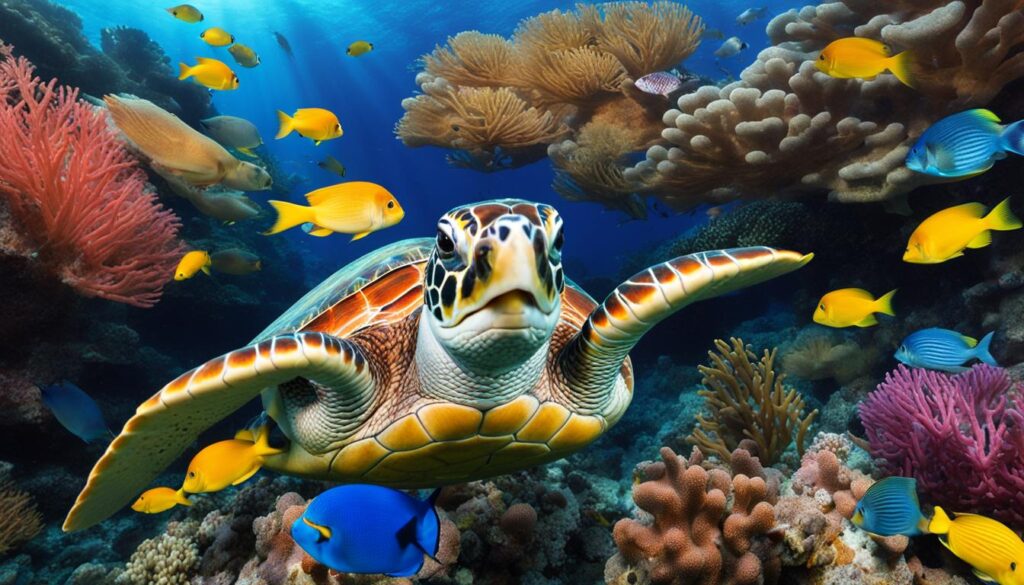
Turtles and Fish Egg Consumption in the Ocean
Turtles and Fish Egg Consumption in Ponds
When it comes to turtles in ponds, snapping turtles and painted turtles are often observed displaying a fondness for fish eggs. These turtles, along with other pond turtles, may consume fish eggs, particularly those of Bluegill. However, it’s important to note that individual turtle behavior and taste preferences can vary, and not all snapping or painted turtles will eat fish eggs in ponds.
Snapping turtles, known for their powerful jaws and aggressive nature, have been observed to consume fish eggs as part of their diet in ponds. These turtles can be opportunistic eaters and will feed on various food sources available to them. Painted turtles, on the other hand, are omnivorous and feed on a wide range of aquatic plants, insects, and small invertebrates. While fish eggs may be included in their diet, the consumption of fish eggs by painted turtles may be less common compared to snapping turtles.
It’s important to understand the behavior of turtles in ponds to prevent any negative impact on fish populations. While some fish eggs may be consumed by turtles, implementing protective measures such as creating physical barriers or utilizing mesh can help protect the fish eggs from being consumed. By ensuring the separation of turtle nests from fish and taking steps to preserve the fish eggs, we can maintain a healthy pond ecosystem where both turtles and fish can coexist harmoniously.
Can Turtles Eat Salmon Eggs?
While turtles typically do not eat fish eggs as a regular part of their diet, they may eat salmon eggs if they come across them and are attracted by their smell. Salmon eggs are a good nutritional source for turtles, as they contain protein, fat, selenium, fatty acids, vitamin B12, and vitamin D. Consuming salmon eggs is not harmful to the health of turtles.
| Nutrient | Salmon Eggs |
|---|---|
| Protein | High |
| Fat | High |
| Selenium | Rich source |
| Fatty Acids | Beneficial omega-3s |
| Vitamin B12 | Essential for metabolism |
| Vitamin D | Contributes to bone health |
Turtles are opportunistic eaters, and their diet can vary depending on the availability of food in their environment. While salmon eggs are not a staple food for turtles, they can provide a nutritious supplement when consumed. However, it’s important to note that the primary diet of turtles typically consists of vegetation, insects, small invertebrates, and sometimes fish. The consumption of salmon eggs by turtles is more of an occasional opportunistic behavior rather than a regular dietary preference.
“Salmon eggs are a good nutritional source for turtles, as they contain protein, fat, selenium, fatty acids, vitamin B12, and vitamin D.”
Impact of Turtle Eating Fish Eggs
Turtles consuming fish eggs can have a negative impact on fish populations and cause ecological imbalances. Freshwater turtles, in particular, may destroy fish nests when they smell the presence of eggs. This predatory behavior can lead to a decrease in fish populations, disrupting the natural balance of the ecosystem.
To protect fish eggs from turtles, physical barriers and mesh can be used to create a protective barrier around the nest sites. These barriers prevent turtles from accessing the eggs while still allowing water and oxygen flow. By implementing such measures, we can help maintain a healthy fish population and prevent the potential ecological damage caused by turtle predation on fish eggs.
It is important to note that while some turtles have a natural inclination to eat fish eggs, not all turtles engage in this behavior. Individual turtle preferences and behavior can vary, so not all turtles within a particular species or habitat may pose a threat to fish eggs. However, it is crucial to monitor and manage turtle populations to ensure the preservation of fish populations and the overall well-being of the ecosystem.
| Turtle Species | Impact on Fish Eggs |
|---|---|
| Freshwater turtles | Predatory behavior towards fish eggs |
| Aquatic turtles | Varies depending on the individual |
| Snapping turtles | Can consume fish eggs in ponds |
| Painted turtles | May eat fish eggs, but preferences can differ |
Turtle Predation on Fish Eggs
Turtle predation on fish eggs can disrupt the reproductive cycle of fish, leading to changes in their population dynamics. This can result in a decrease in fish populations, affecting the overall biodiversity and ecosystem equilibrium.
By protecting fish eggs from turtle predation, we can help maintain a healthy balance in aquatic environments. It is crucial to implement measures that safeguard fish nests and promote the successful reproduction of fish species. Alongside conservation efforts, further research can provide valuable insights into the intricate relationship between turtles and fish eggs and guide effective management strategies for their coexistence.

Do Turtles Eat Their Eggs?
When it comes to the behavior of turtles, there is a common misconception that adult turtles eat their own eggs. However, this is not typically the case. Female turtles usually lay their eggs in soil or sand to protect them from potential predators and changes in the environment. They invest a great deal of energy into ensuring the survival of their offspring, so it is rare for them to consume their own eggs.
While adult turtles generally do not eat their own eggs, there are situations where they may consume a dead egg. Turtles are opportunistic feeders, and if they come across a dead egg, they may eat it as a source of protein. This behavior is more common in situations where the turtle’s food supply is limited or if they are unable to find other sources of nutrition.
To preserve turtle eggs and ensure successful hatching, it is crucial to keep male and female turtles together. By creating a suitable nesting environment and providing adequate resources, such as proper nesting sites and a nutritious diet, you can increase the chances of the eggs hatching successfully and prevent female turtles from consuming them.
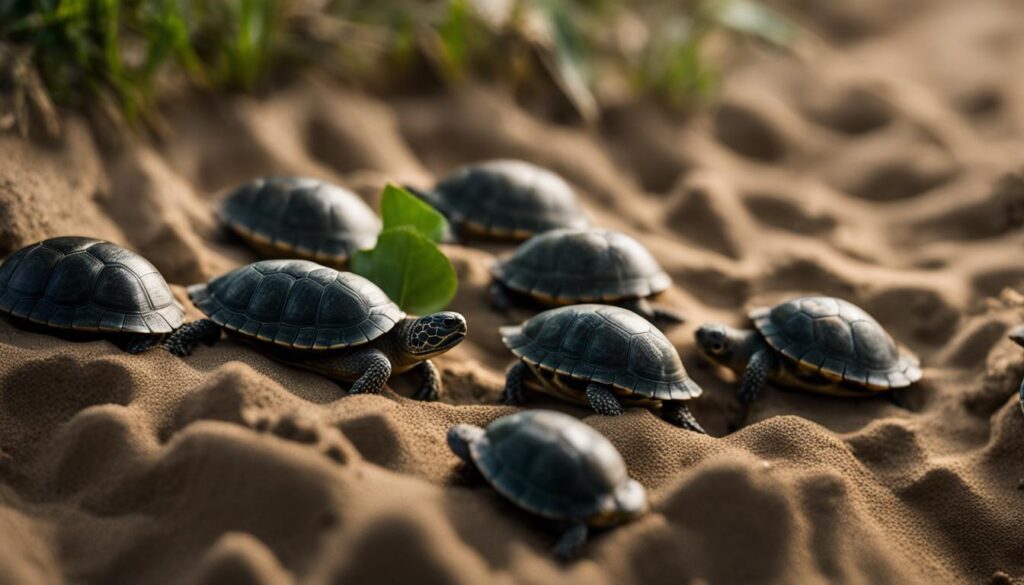
Turtle Egg Consumption: A Rare Occurrence
“While turtles generally do not eat their own eggs, they may consume dead eggs as a source of protein.”
In summary, adult turtles do not typically eat their own eggs. Female turtles go to great lengths to protect and ensure the survival of their offspring. However, in rare instances, when a dead egg is present, a turtle may consume it for nutritional purposes. By understanding the behavior of turtles and providing suitable conditions for nesting, we can help preserve turtle eggs and contribute to the conservation efforts of these remarkable creatures.
Turtle and Fish Coexistence: Protecting Fish Eggs
Turtles and fish can coexist in the same ecosystem, but it’s important to take steps to protect fish eggs from being consumed by turtles. To ensure the survival of fish eggs, it is essential to separate turtle nests from fish populations.
To achieve this separation, physical barriers can be used to create distinct areas for turtles and fish. By implementing these barriers, fish eggs can be safeguarded, allowing them to develop and hatch successfully without the risk of predation.
Protecting fish eggs from turtles is crucial for maintaining a balanced ecosystem. When turtles consume fish eggs, it can lead to a decrease in fish populations and disrupt the natural food chain. By creating separate spaces for turtles and fish, we can promote the coexistence of these species while protecting the life cycle of fish.
“Separating turtle nests from fish populations is essential for ensuring the survival of fish eggs and maintaining a healthy aquatic environment.”
| Turtle and Fish Coexistence | Protecting Fish Eggs |
|---|---|
| Separate turtle nests from fish | Use physical barriers |
| Promote successful egg development | Prevent predation by turtles |
| Maintain a balanced ecosystem | Protect fish populations |
By prioritizing the protection of fish eggs, we can support the overall health and biodiversity of aquatic environments. It is essential to create a harmonious coexistence between turtles and fish, ensuring the survival of both species for generations to come.
Turtle Diets and Fish Eggs
Fish eggs consumption by turtles is not unusual. These turtles, including aquatic, snapping, freshwater, and painted turtles, are known to consume fish eggs when they come across them. While not all turtles eat fish eggs, some individuals have a natural instinct for locating fish nests by smelling the eggs. This behavior stems from turtles’ opportunistic eating habits, as they will consume nearby food sources.
Eating fish eggs can provide turtles with a good source of nutrition due to the high protein content. However, the consumption of fish eggs by turtles can have negative implications for fish populations and create ecological imbalances. To protect fish eggs from turtles, physical barriers and mesh can be used to create a barrier around the eggs. Additionally, it’s worth noting that female turtles may consume their own eggs if they find them dead.
Turtles and fish can coexist, but it’s important to ensure the separation of their habitats to maintain a harmonious relationship. By implementing protective measures and creating separate areas for turtles and fish, it’s possible to protect fish eggs and prevent harm to the fish population. This helps maintain the balance of the ecosystem and promotes coexistence between turtles and fish.
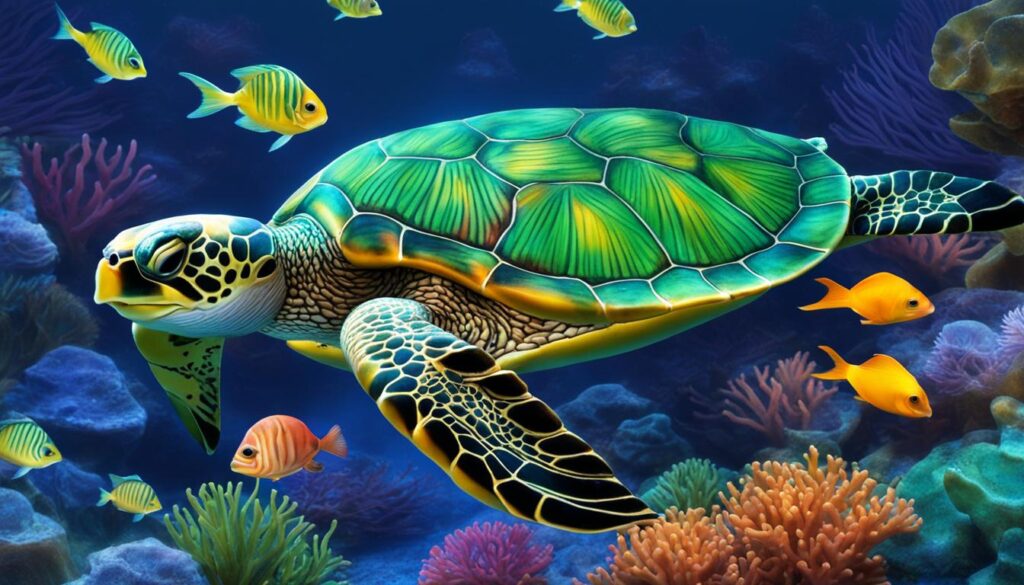
Tips for Coexistence
- Use physical barriers or mesh to protect fish eggs from being consumed by turtles.
- Create separate areas for turtles and fish to ensure their habitats remain distinct.
- Implement proper management techniques to prevent ecological imbalances and harm to fish populations.
“Turtles and fish can coexist, but it’s important to ensure the separation of their habitats to maintain a harmonious relationship.”
| Turtle Species | Fondness for Fish Eggs |
|---|---|
| Aquatic turtles | Some individuals are fond of consuming fish eggs. |
| Snapping turtles | Known to eat fish eggs, especially those of Bluegill. |
| Freshwater turtles | May destroy fish nests when they smell the presence of eggs. |
| Painted turtles | Individual preferences and behavior can vary. |
Uncommon Habits of Turtles
Turtles are fascinating creatures with a range of interesting habits and behaviors that go beyond their dietary preferences. These unique traits provide insight into the behavior and lifestyles of turtles, making them even more intriguing to study and observe.
One interesting habit of turtles is their ability to hide their eggs in soil or sand. Female turtles carefully select a nesting site and bury their eggs to protect them from predators and changes in the environment. This instinctive behavior ensures the survival of the next generation of turtles.
Another unusual habit of turtles is their willingness to consume dead eggs. While adult turtles do not typically eat their own eggs, they may eat eggs that have not successfully hatched. This behavior provides turtles with a source of protein and helps them maintain their nutrient intake.
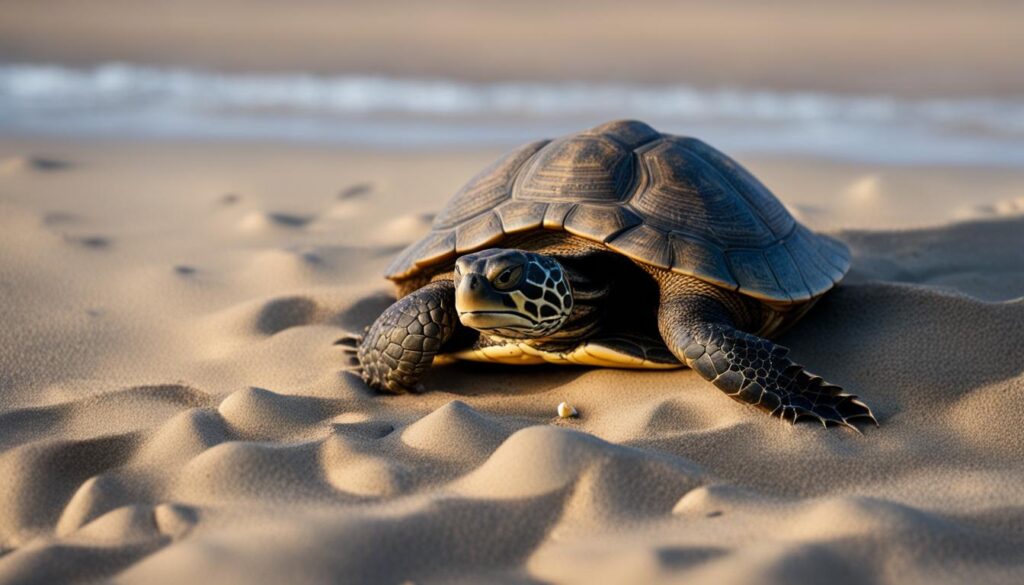
Turtles also exhibit interesting mating rituals and courtship behaviors. Some species, such as the red-eared slider, engage in elaborate courtship displays that involve head bobbing, swimming patterns, and vocalizations. These rituals help establish pair bonds and ensure successful reproduction.
Turtle Diet Preferences
In addition to their unique habits, turtles have diverse diet preferences. While some turtles are omnivorous and consume a variety of foods, others have more specialized diets. For example, the leatherback sea turtle feeds primarily on jellyfish, while the hawksbill sea turtle has a diet consisting mainly of sponges.
Turtles are also known for their ability to adapt their diets based on the available food sources. In times of scarcity, turtles can consume different types of vegetation, insects, and even small vertebrates. This adaptability allows turtles to thrive in a wide range of environments.
Interesting Turtle Facts
Here are some other fascinating facts about turtles:
- Turtles have been around for over 200 million years, making them one of the oldest reptile groups on Earth.
- Some turtles can live for over 100 years, with the oldest recorded turtle reaching an impressive age of 188 years.
- Turtles have a unique shell made up of two parts: the carapace (upper shell) and the plastron (lower shell), which provide protection and support.
- Turtles are ectothermic, meaning they rely on external heat sources to regulate their body temperature.
By delving deeper into these uncommon habits and interesting facts, we can gain a deeper appreciation for the diverse and intriguing world of turtles.
Turtles and Ponds: Are Turtles Safe for Fish?
When it comes to the coexistence of turtles and fish in ponds, it is crucial to consider the impact that turtles can have on the fish population. Turtles, particularly species like snapping turtles and painted turtles, may be inclined to consume fish eggs, posing a threat to the survival of fish. However, with proper management and an understanding of turtle behavior, it is possible to maintain a healthy pond ecosystem where both turtles and fish can thrive.
To ensure the safety of fish in ponds, it is important to create separate areas for turtles and fish. This can be achieved by using physical barriers or implementing floating platforms to provide refuge for fish and prevent turtles from accessing their nests. By separating the habitats of turtles and fish, the risk of predation on fish eggs can be significantly reduced, allowing fish populations to flourish.
Additionally, implementing protective measures specifically targeted at safeguarding fish eggs can help maintain a balance in the pond ecosystem. This can be done by using mesh or netting to cover fish nests and prevent turtles from reaching them. Protecting fish eggs from predation ensures the continuity of fish populations and helps maintain a healthy pond ecosystem overall.
Turtle Behavior in Ponds
Understanding the behavior of turtles in ponds is essential for managing their impact on fish. Turtles are known to be opportunistic feeders and may consume fish eggs or small fish if given the opportunity. However, not all turtles exhibit the same feeding habits, and individual preferences can vary. Some turtles may show a greater tendency to consume fish eggs, while others may primarily feed on aquatic plants, insects, or mollusks.
It is important to observe the behavior of turtles in the specific pond environment and take appropriate measures accordingly. By monitoring their feeding habits and preferences, it is possible to make informed decisions to protect the fish population and maintain a healthy pond ecosystem.
| Turtles | Impact on Fish |
|---|---|
| Snapping Turtles | Predators of fish eggs and small fish. |
| Painted Turtles | May consume fish eggs but primarily feed on plants and invertebrates. |
By understanding the impact of different turtle species and their specific behaviors, pond owners can take appropriate steps to protect fish populations and maintain a harmonious pond ecosystem. With proper management and measures in place, turtles and fish can coexist in a way that ensures the survival and thriving of both species.
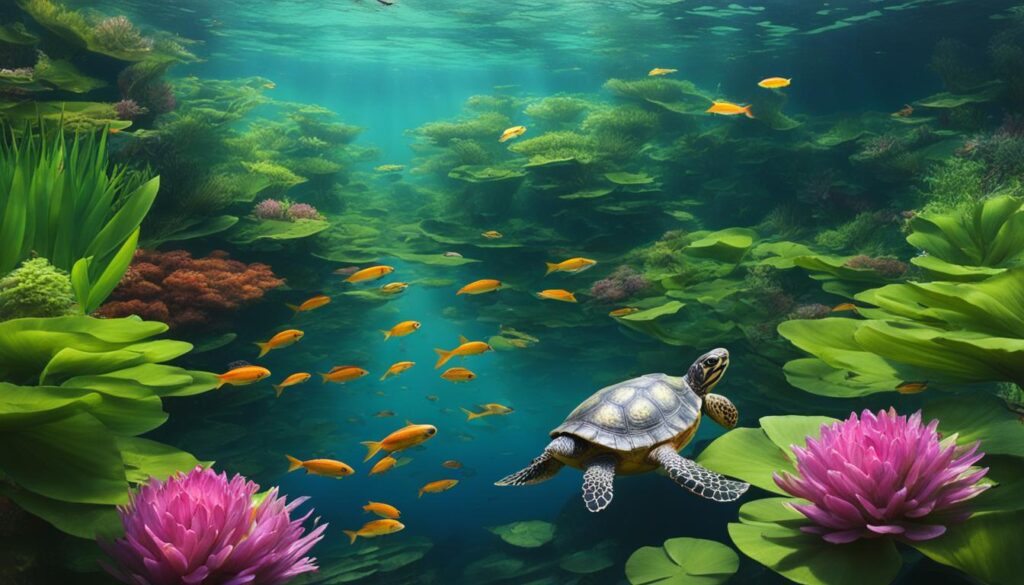
Other Turtle-related Topics to Explore
If you’re fascinated by turtles and want to dive deeper into their world, there are several other intriguing topics to explore. From the unique relationship between sea turtles and jellyfish to the impact of turtles on fish ponds, there is much to discover about these fascinating creatures.
Sea turtles and jellyfish have an interesting connection in their natural habitat. Sea turtles are known to consume jellyfish as part of their diet. Exploring the dynamics of this predator-prey relationship can provide valuable insights into the ecological balance of marine ecosystems.
When it comes to fish ponds, turtles can have both positive and negative impacts. While they contribute to the overall biodiversity of the pond, they can also pose a threat to fish populations by consuming fish eggs. Learning about the potential consequences and implementing appropriate mitigation strategies can help maintain a healthy pond ecosystem.
If you’re considering creating a turtle-friendly pond, it’s essential to know which plants are suitable for their habitat. Some plants can provide hiding spots, shade, and food sources for turtles, creating an ideal environment for them to thrive.
Lastly, exploring the feeding habits of turtles can shed light on their dietary preferences and nutritional requirements. Understanding what turtles eat can help ensure their overall well-being and guide their care in captivity or in natural habitats.
Do Turtles Eat Fish Eggs FAQ
Do turtles eat fish eggs?
Yes, some species of turtles, including aquatic, snapping, freshwater, and painted turtles, are known to eat fish eggs.
What types of turtles eat fish eggs?
Aquatic turtles, snapping turtles, freshwater turtles, and painted turtles are known to eat fish eggs.
Do sea turtles eat fish eggs in the ocean?
While fish eggs are not a regular part of their diet, sea turtles may consume fish eggs when they come across them.
Do turtles in ponds eat fish eggs?
Snapping turtles and painted turtles in ponds are often fond of eating fish eggs, especially those of Bluegill.
Can turtles eat salmon eggs?
Yes, turtles can eat salmon eggs and find them to be a good nutritional source.
What is the impact of turtles eating fish eggs?
Turtles consuming fish eggs can have a negative impact on fish populations and cause ecological imbalances.
Do turtles eat their own eggs?
No, adult turtles generally do not eat their own eggs, but they may consume dead eggs if they find them.
How can fish eggs be protected from turtles?
Physical barriers and separating turtle and fish habitats can help protect fish eggs from turtles.
What are some uncommon habits of turtles?
Turtles have interesting habits such as hiding their eggs, consuming dead eggs for protein, and maintaining a balanced turtle population.
Are turtles safe for fish in ponds?
While turtles can coexist with fish in ponds, it is important to consider their impact on the fish population and take protective measures.
What other turtle-related topics can I explore?
You can explore topics such as sea turtles and jellyfish, the impact of turtles on fish ponds, turtle-friendly plants for ponds, and turtle feeding habits.
Do turtles feed on fish eggs?
Do turtles feed on fish eggs? Yes, turtles do feed on fish eggs. Turtles are opportunistic eaters and will eat fish eggs, especially bluegills, straight off the beds. Turtles are opportunistic eaters and will eat fish eggs, especially bluegills, straight off the beds.

